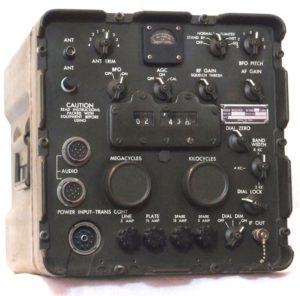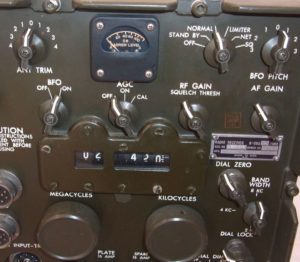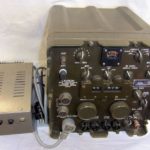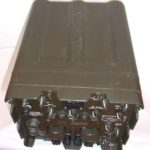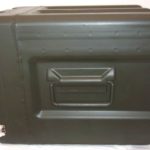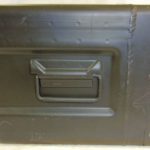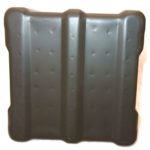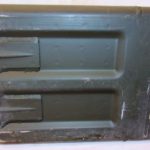Collins R-392 was the only military receiver in the collection that I had the fortune to get hold of.
But what a fine piece of receiver!! The case is in very good condition and has only minor signs of wear. All knobs are there and functional, the lettering is intact and the meter glass and scale are clear.
There were also a mains adapter with matching connector to the receiver in the collection.
This US military receiver is a popular collectors item, produced between 1954-1962. It was designed by Collins and built under licence by a number of manufactures including Collins Radio Company, Stewart Warner, Stromberg Carlsson, Philco Corporation, Dubrow Electronics Industries, Western Electric and Decitron Electronics. A total of 25608 receivers has been listed according to this site: http://www.roveroresearch.info/home/boatanchor-radios/r392/r-392-general-characteristics/r-392-contracts
You can really see that it is constructed to be handled under battlefield conditions. The case has no vents, and with proper connectors the radio is water resistant. This might be the cause to that the inside of these radios often is pristine, no matter how ugly the outside may be!
R-392 Basic Specifications:
Superheterodyne: Triple conversion below 8 MHz (IF 9,5-18 MHz / 2-3 MHz / 455 kHz),
double conversion above (IF 2-3 MHz and 455 kHz)
Frequency Range: 0.5-32 MHz, in 32 bands, 1 MHz wide each.
Operating Voltage: 24-28 VDC
Size: (W*H*D): 295*295*365 mm / 11.14 × 11.54 × 13.86 inch
Weight: 23,7 kg / 52.2 lbs
Modes of Operation: AM/CW
Current Drain: 3 Amps Max
Bandwidth: 2, 4 and 8 kHz
Impedance: 50 Ohms
Audio output: 600 Ohms
The set uses many locally unobtainable tubes and has the potential to be a difficult piece of equipment to maintain. The tuning mecanism contain an often used construction in automotive radios, ferrite slugs connected to a bar (slug rack). Instead of a tuning capacitor, the slugs are used to tune the inductors and therebye give a linear frequency response. In this construction dirt did less damage to the movable coil slug than it would to a capacitors plates. The two main frequency tuning knobs are connected to mechanical digital counters to indicate megacycles and kilocycles, each separately controllable. The manual can be found on: http://collinsradio.org/archives/manuals/TM%2011-858-R392.pdf
To operate the R-392 as a “stand alone” receiver, a separate +25vdc to +28vdc power supply will be required and it should be capable of at least 3 or 4 amps. Receiver performance will begin to drop off as the supply voltage is reduced below +25vdc and the R-392 will barely function below +24vdc.
The radio is very silent in operation as it does not use any vibrators, dynamotors or other noisy voltage converters. The radio can be used as a stand alone receiver or as part of a two-way radio set with a
T-195 Transmitter. This configuration is called the GRC-19.
Now this receiver has been sold (november 2016) to a radioamateur/collector in the Stockholm area.
He has deep knowledge on the mystery and flaws of this receiver.
